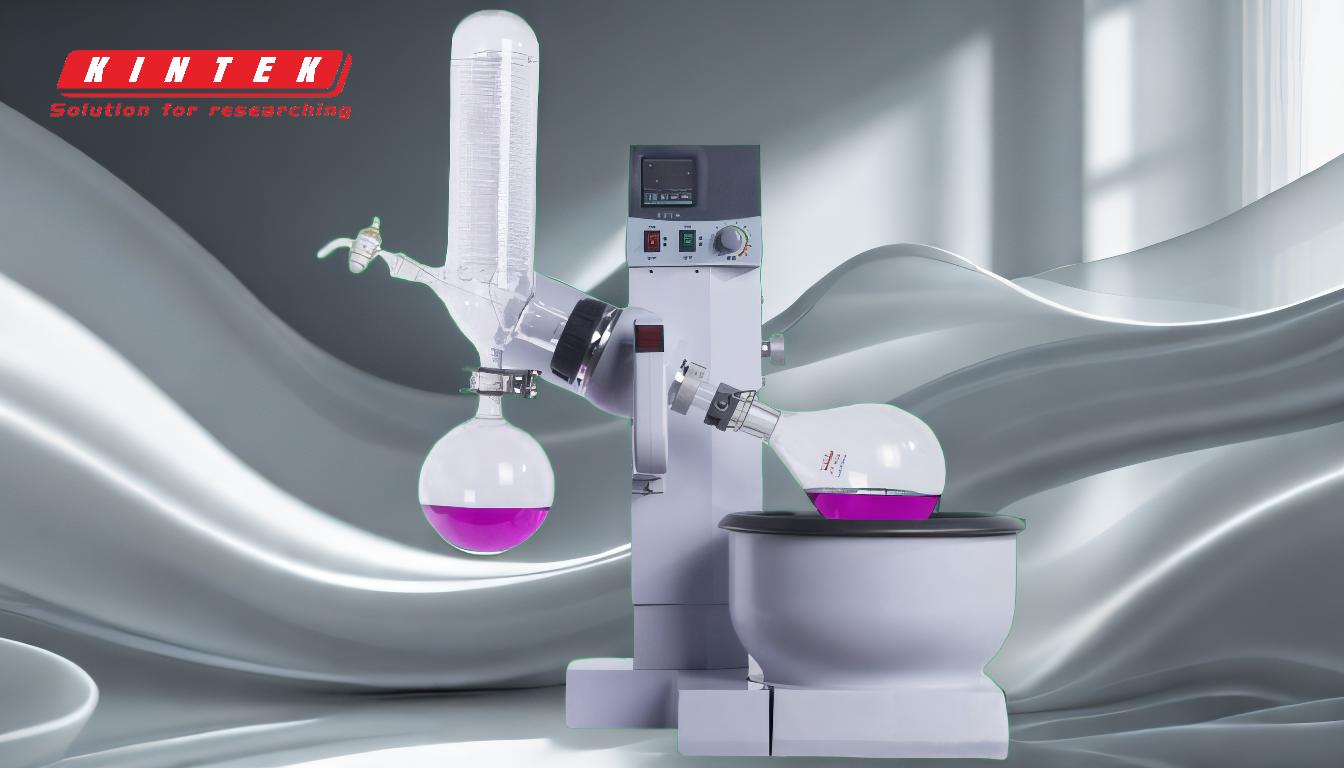Distillation and rotary evaporation (rotovap) are both techniques used to separate components of a mixture, but they differ significantly in their methods, applications, and outcomes. Traditional distillation relies on heating a mixture to separate components based on their boiling points, often at higher temperatures, which can alter sensitive compounds. In contrast, rotary evaporation uses a vacuum to lower the boiling points of solvents, allowing for gentler separation at lower temperatures. This method is particularly useful for preserving delicate flavors, essences, and compounds without degradation. Additionally, rotovaps offer precise control, faster processing, and the ability to recover nearly 100% of the solvent, making them ideal for applications requiring high precision and minimal compound alteration.
Key Points Explained:

-
Temperature Control and Impact on Compounds:
- Traditional Distillation: Operates at higher temperatures, which can alter or degrade heat-sensitive compounds. This is especially problematic for delicate flavors, essences, or bioactive compounds.
- Rotary Evaporation: Uses a vacuum to lower the boiling point of solvents, enabling separation at much lower temperatures. This minimizes the risk of damaging sensitive compounds, making it ideal for applications in food, pharmaceuticals, and essential oils.
-
Separation Mechanism:
- Traditional Distillation: Relies on heating a mixture to vaporize the more volatile components, which are then condensed and collected. This method is effective for concentrating alcohol or removing contaminants but may not preserve the integrity of all compounds.
- Rotary Evaporation: Combines vacuum pressure with rotation of the evaporating flask. The vacuum lowers the boiling point, while the rotation increases the surface area of the mixture, promoting faster and more even evaporation. This allows for precise separation of components without altering their chemical structure.
-
Applications and Outcomes:
- Traditional Distillation: Commonly used for producing alcoholic beverages, essential oils, and purified water. It focuses on concentrating specific components (e.g., alcohol) and removing unwanted contaminants.
- Rotary Evaporation: Ideal for applications requiring the preservation of delicate compounds, such as extracting flavors, essences, or bioactive molecules. It can also remove solvents, tannins, or undesirable elements (e.g., color, bitterness) while retaining the full flavor profile.
-
Efficiency and Precision:
- Traditional Distillation: Less precise in controlling temperature and evaporation rates, which can lead to inconsistent results or compound degradation.
- Rotary Evaporation: Offers precise control over temperature, pressure, and rotation speed, ensuring consistent and reproducible results. It also allows for nearly 100% solvent recovery, making it more efficient for laboratory and industrial use.
-
Equipment Design and Functionality:
- Traditional Distillation: Typically involves a simple setup with a heat source, condenser, and collection flask. It is less versatile and often requires higher energy input.
- Rotary Evaporation: Features a more complex design with a vacuum pump, rotating flask, and condenser. The rotation increases the surface area of the mixture, speeding up the distillation process and ensuring uniform evaporation.
-
End Product:
- Traditional Distillation: The distillate (condensed vapor) is the primary product, often used in its concentrated form.
- Rotary Evaporation: The residue (concentrated compound) left in the flask after solvent removal is the primary product, preserving the integrity of the desired compounds.
In summary, while both distillation and rotary evaporation are used for separating mixtures, rotary evaporation offers significant advantages in terms of precision, efficiency, and the ability to preserve delicate compounds. Traditional distillation remains valuable for applications requiring high-temperature separation, but rotary evaporation is the preferred method for applications demanding minimal compound alteration and high recovery rates.
Summary Table:
| Aspect | Traditional Distillation | Rotary Evaporation |
|---|---|---|
| Temperature Control | Higher temperatures, risk of compound degradation | Lower temperatures, preserves delicate compounds |
| Separation Mechanism | Vaporization and condensation | Vacuum + rotation for faster, precise separation |
| Applications | Alcoholic beverages, essential oils, purified water | Food, pharmaceuticals, essential oils |
| Efficiency | Less precise, slower | High precision, faster, 100% solvent recovery |
| Equipment Design | Simple setup, high energy input | Complex design, energy-efficient |
| End Product | Distillate (condensed vapor) | Residue (concentrated compound) |
Need help choosing the right separation method for your application? Contact our experts today!









